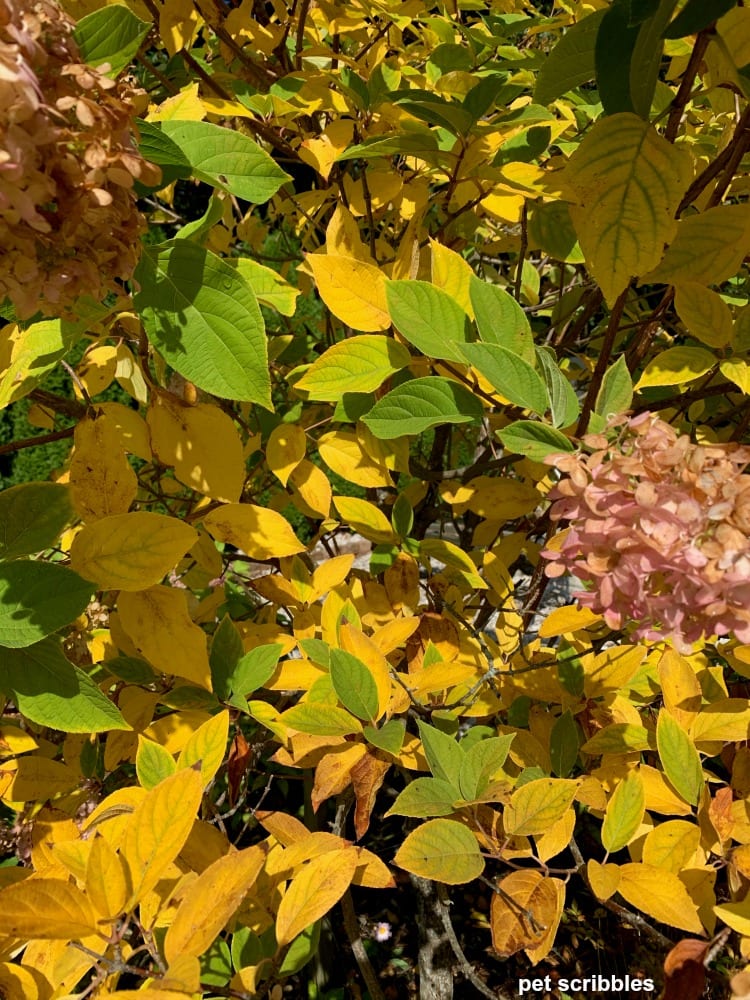The Only Guide for Hydrangea Leaves Turning Yellow
Some Known Facts About Hydrangea Leaves Turning Yellow.
Table of ContentsThe Buzz on Hydrangea Leaves Turning YellowThe Best Guide To Hydrangea Leaves Turning YellowSome Known Facts About Hydrangea Leaves Turning Yellow.Unknown Facts About Hydrangea Leaves Turning Yellow
Big leaves usually look droopy throughout the mid-day heat. When they stop working to perk up in the evening or still look shrivelled in the morning, your plant can be overwatered.Eliminate the plant from the dirt and trim out any roots that aren't white and turgid (plump). Replant in a brand-new area or function some sand into the soil for better drainage.
Include a little bit of pure water, mix the components, and drain the extra water. Put a p, H screening strip in and wait on an analysis. You can use an cost-effective moisture and ph testing meter which will likewise come in handy later when you intend to examine your plant for underwatering and overwatering.
The very best means to do that is with dirt modifications. Sphagnum moss or peat moss stops the soil from compacting and betters dirt drain while additionally elevating the dirt's level of acidity. You can spread sulfur contribute your hydrangea dirt as well. The most convenient means is to simply make use of a plant food that aids keep the correct level of acidity in the dirt while also feeding the plant.
How Hydrangea Leaves Turning Yellow can Save You Time, Stress, and Money.
This is one great reason to repot houseplants routinely (though there are others, such as root advancement for example). It is likewise why houseplants require a much stricter feeding routine than the majority of exterior plants. When a hydrangea houseplant lacks nutrients, its leaves will certainly be the very first to reveal the signs.

Most liquid fertilizer calls for dilution with water to decrease the concentration rather. You will also need to fertilize the plant manually and routine intervals. When springtime starts in March, it's the active growing season for lots of houseplants, consisting of hydrangeas. At this factor, you ought to start your feeding routine. Apply fluid plant food to your hydrangea because this stuff, as I pointed out previously, is fast-releasing.
The dripline is the location located under the vegetation that is the outermost far from the center of the plant. Instead than applying feed to the center of the plant it is best to focus it mostly in the outer locations of the pot. If you would certainly instead make use of a slow-release fertilizer such as granular or spike plant food, after that cover either type with some soil after you insert them.
The Definitive Guide to Hydrangea Leaves Turning Yellow

The hydrangea is surprisingly frost-resistant, once temperatures start getting right into the 20s, the plant is in significant threat. If the temps are in the reduced 10s, that risk is a lot more extreme still. Clearly this is even more of an interest in outside plants so if you maintain potted hydrangea outside you ought to bring them inside your home in very cold weather condition conditions or perhaps think about transferring them inside throughout of the winter months.

A dried hydrangea, A large issue with many houseplants is origin rot. Origin rot happens when you overwater a plant and due to the fact that it is such a common issue (especially with succulents) lots of houseplant proprietors are scared of overwatering their plants. Hydrangeas call for more watering that most other usual houseplants and can end up being dried out when they are underwatered.
The Definitive Guide to Hydrangea Leaves Turning Yellow
They require copious quantities of water, yet they additionally dislike to expand in standing water or water drenched soil. Be absolutely sure that your hydrangea is dried out as a result of a lack of water and not as a result of it be given way too much water (extra on this later). Understand before you get hold of that watering can that an overwatered hydrangea shows the same signs and symptoms as an underwatered one! Overwatering is a major problem if you skimp on its water needs even a little bit, your hydrangea will be fast to reveal it.
The most effective method to Visit This Link establish if your hydrangea is undersea is to inspect the moisture levels in the soil. By utilizing an effective yet inexpensive wetness and p, H tester, or by sticking your finger into the soil, you will swiftly inform if the plant requires water. To get your hydrangea click reference sprinkling practices on the appropriate track, you require to be mindful regarding the wetness levels in its dirt.
When you remove your finger from wet dirt it will certainly have percentages of dirt deposit adhered to it. Dry soil will imply your finger appears clean or with completely dry soil that is quickly surprised. If it's damp, and the plant has yellow leaves then the plant has actually likely been overwatered and you will certainly require to follow the recommendations given in the section listed below.